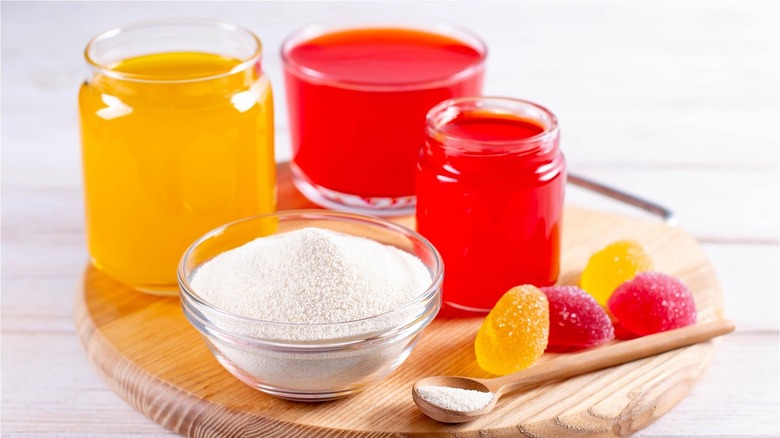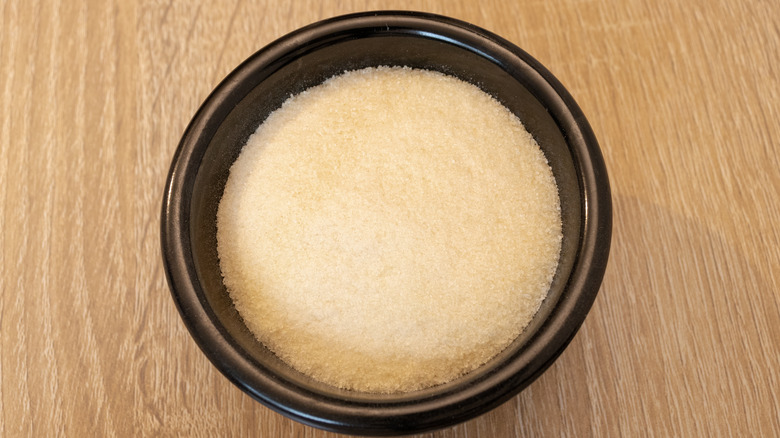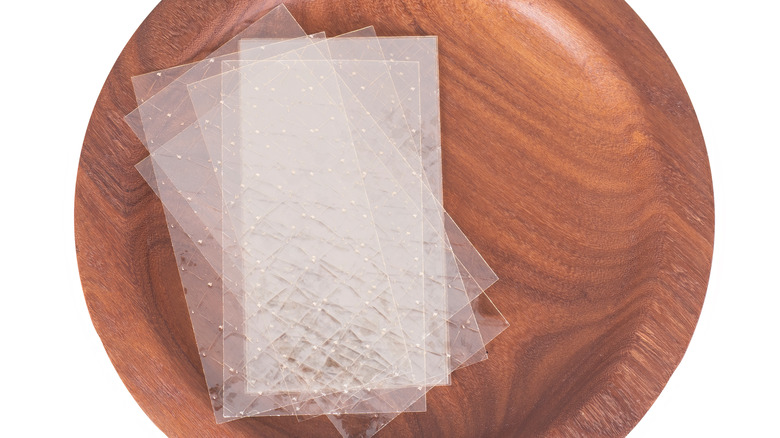What Makes Powdered And Sheet Gelatin Different?
Gelatin is an incredibly central component in many dishes, primarily desserts. It seems to sometimes be a bit of an unsung hero. However, some find that working with gelatin can be a bit fussy — unsure how to 'bloom' it, unclear about the different types, not sure how much to use, and so on and so forth.
If you've wondered about gelatin while you were attempting to put together a rich, creamy panna cotta, soft homemade marshmallows, or if you're just a big Jell-O fan – look no further! There is no need to be intimidated. Albeit sometimes a bit difficult to find in the store, gelatin is actually a breeze to work with. Some also get confused about the different variations. For instance, gelatin typically comes in either powdered form or as a dried sheet, according to Difference Between.net. Read ahead for the answers to all of your gelatin questions including the difference between powdered (or granular) gelatin and sheet gelatin.
How to use powdered gelatin
According to Difference Between.net, sheet gelatin and powdered gelatin differ in both appearance but also preparation. Powdered gelatin should be mixed with water prior to cooking. What's Cooking America notes the importance of blooming the powdered gelatin, which has to do with combining water and gelatin and letting it sit for up to five minutes before heating. Other juices or liquids can also be used, but be mindful of certain tropical fruits, which have an enzyme that will counteract the gelatin and not produce the desired effect.
Furthermore, be sure to only use cool water or liquid – not boiling. Be sure not to stir the mixture, but instead "scatter or sprinkle" the gelatin over the top of the liquid before letting it settle. From there you should heat the mixture until all gelatin has dissolved. According to David Lebovitz, never let anything with gelatin come to a boil. Voila – continue the recipe as normal. Like sheet gelatin, as Good Things Baking notes, powdered gelatin has a slight (off-white) coloration on its own. But it is entirely clear once added to a recipe, and it's also flavorless and odorless.
So no worries about gelatin affecting the integrity of your dessert. Lastly, the outlet notes that it takes about six hours for gelatin to fully set, so always give yourself some extra time before you plan on serving any gelatin-rich desserts or dishes.
How to use sheet gelatin
Sheet gelatin, conversely, requires being rehydrated in a large bowl of cold water. You then need to 'wring' out the excess moisture, just like you might do with a damp towel. Incorporate into the heating component of the recipe and proceed as you would with the granulated (or powdered) gelatin, as noted by Foods Guy. Be sure to keep the heat quite low and avoid scorching. Of course, there's also a timely element to working with sheet gelatin. According to Food Renegade, it begins to set immediately. Be sure to have your ingredients ready to go and follow the recipe to ensure that there are no issues in which your gelatin over-sets or negatively impacts your final result in any way.
While the precise amounts are often hotly contested in culinary circles, it's also possible to substitute sheet gelatin for powdered gelatin and vice versa. According to Substitute Cooking, around one tablespoon of powdered gelatin equals four sheets. Note: Food Renegade states that sheet gelatin is also sometimes called leaf gelatin.
Clearly, while it can initially seem a bit intimidating or tough to use, mastering gelatin is much easier than you'd realize.


